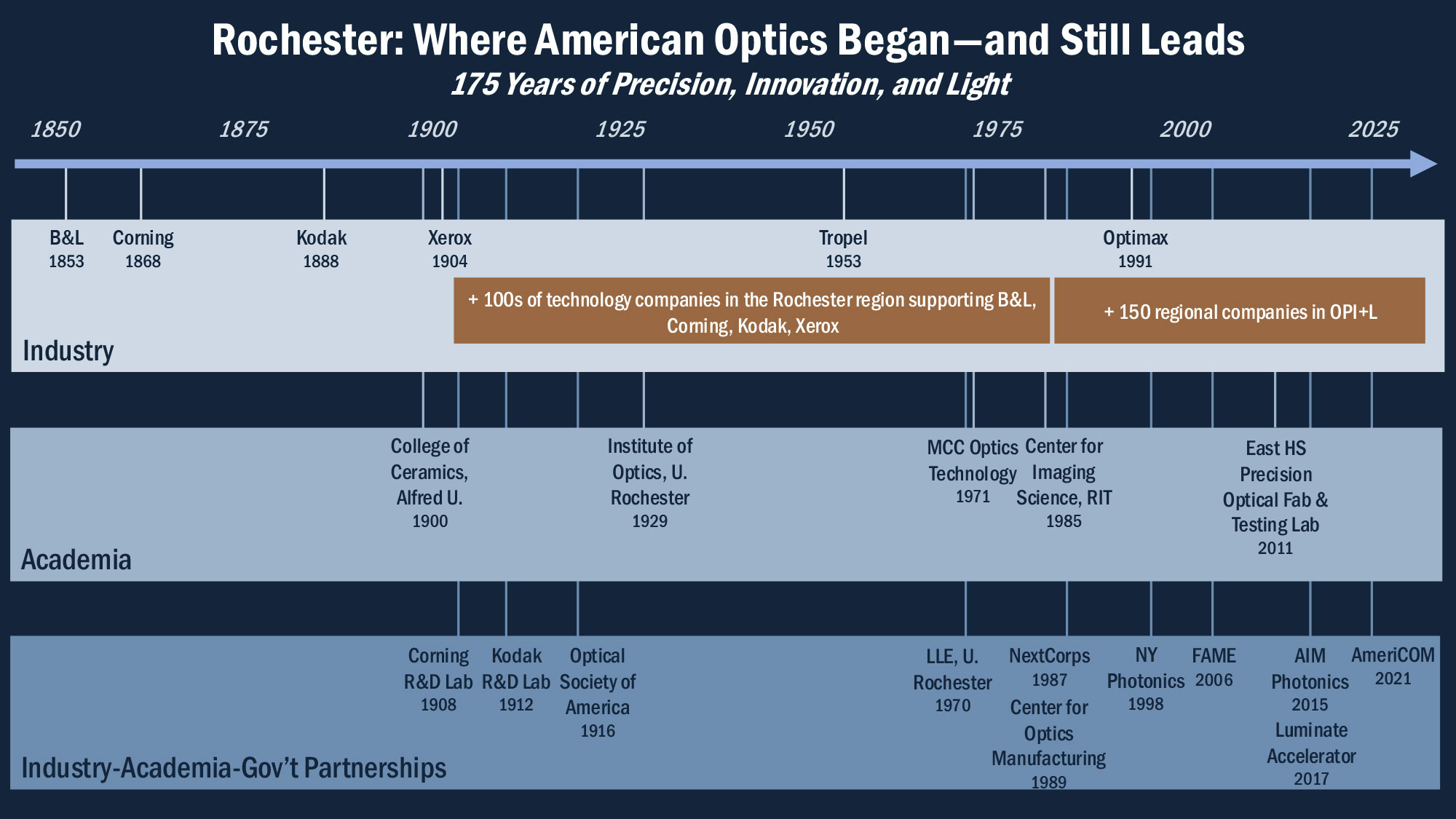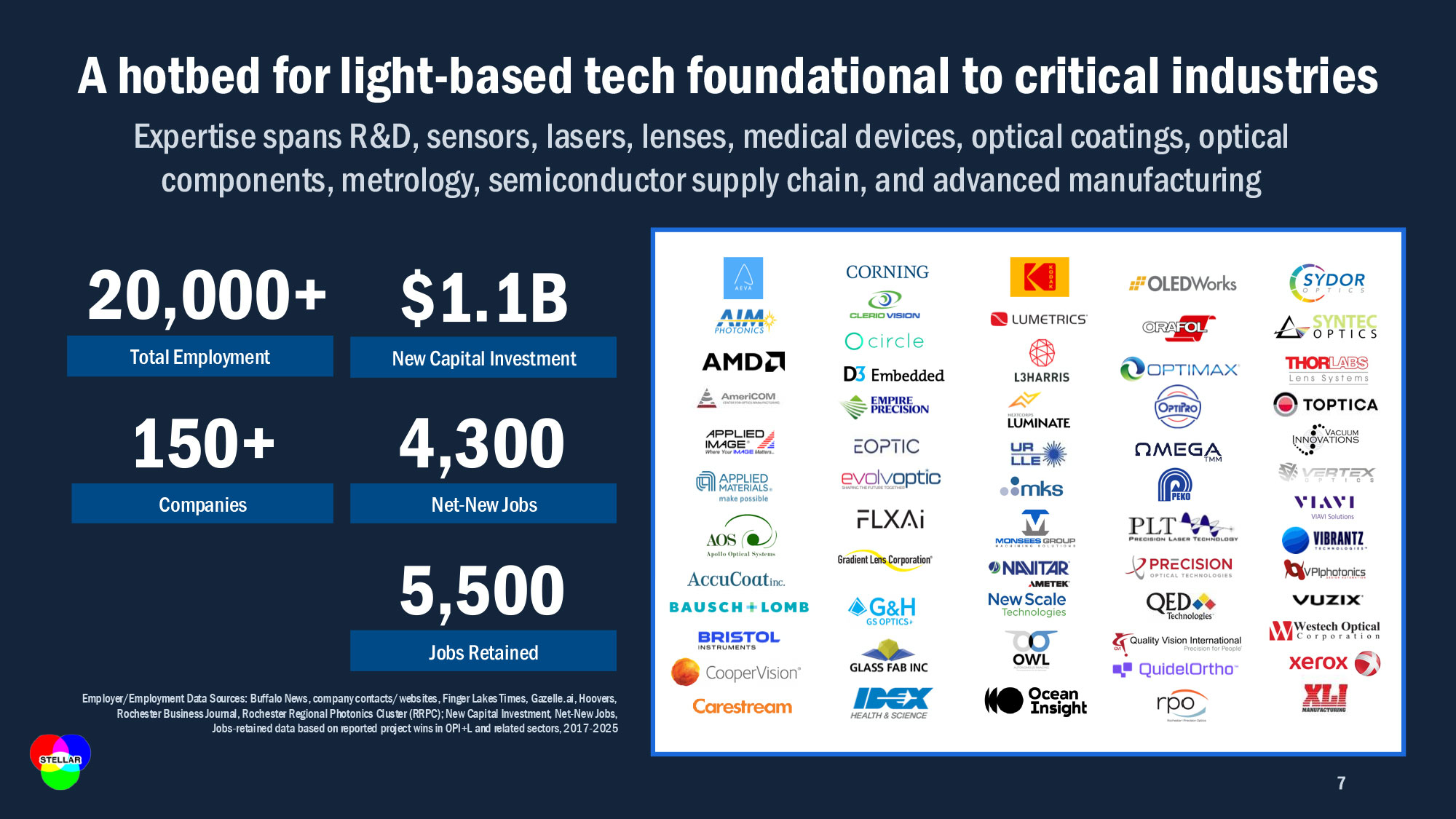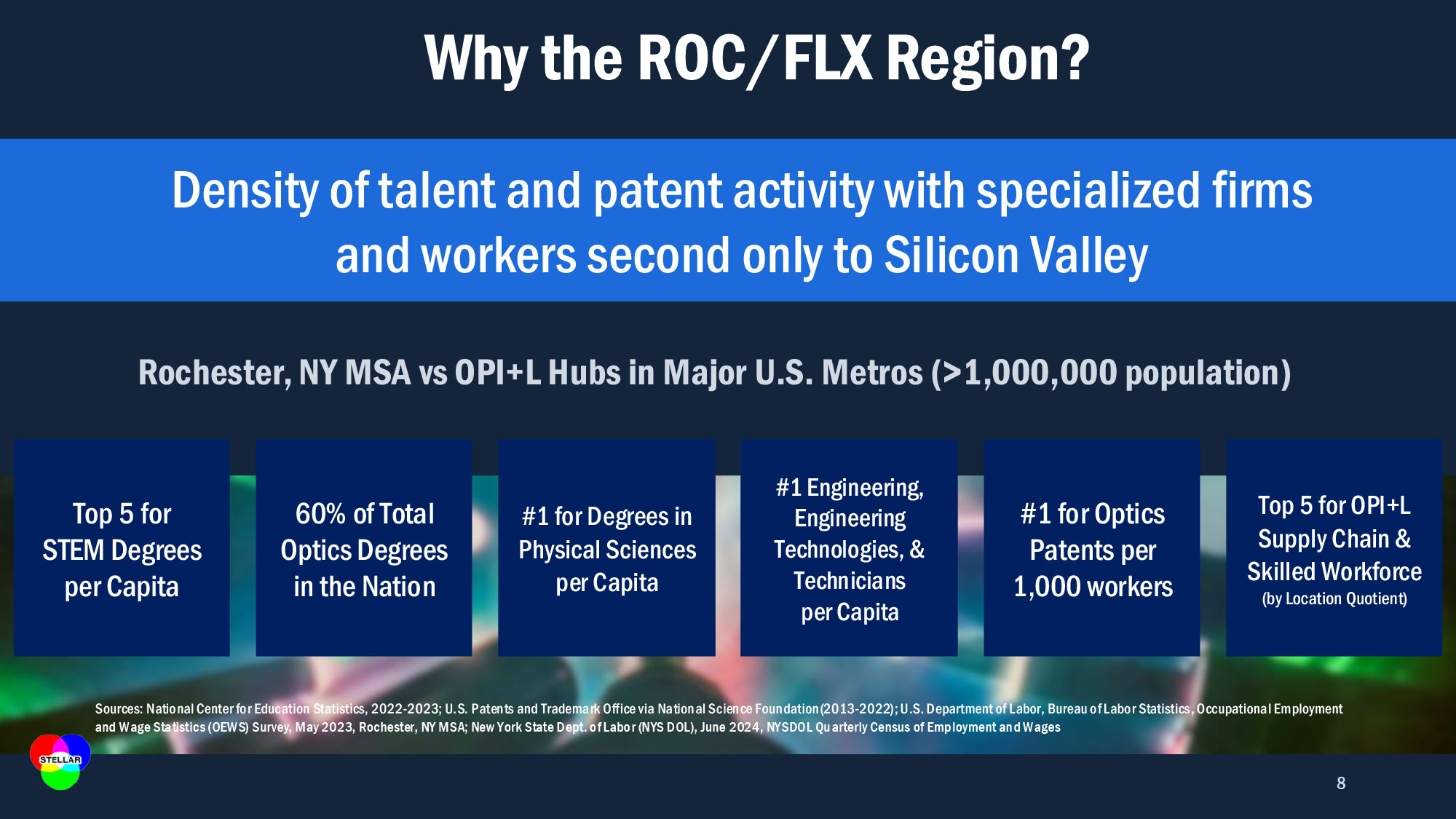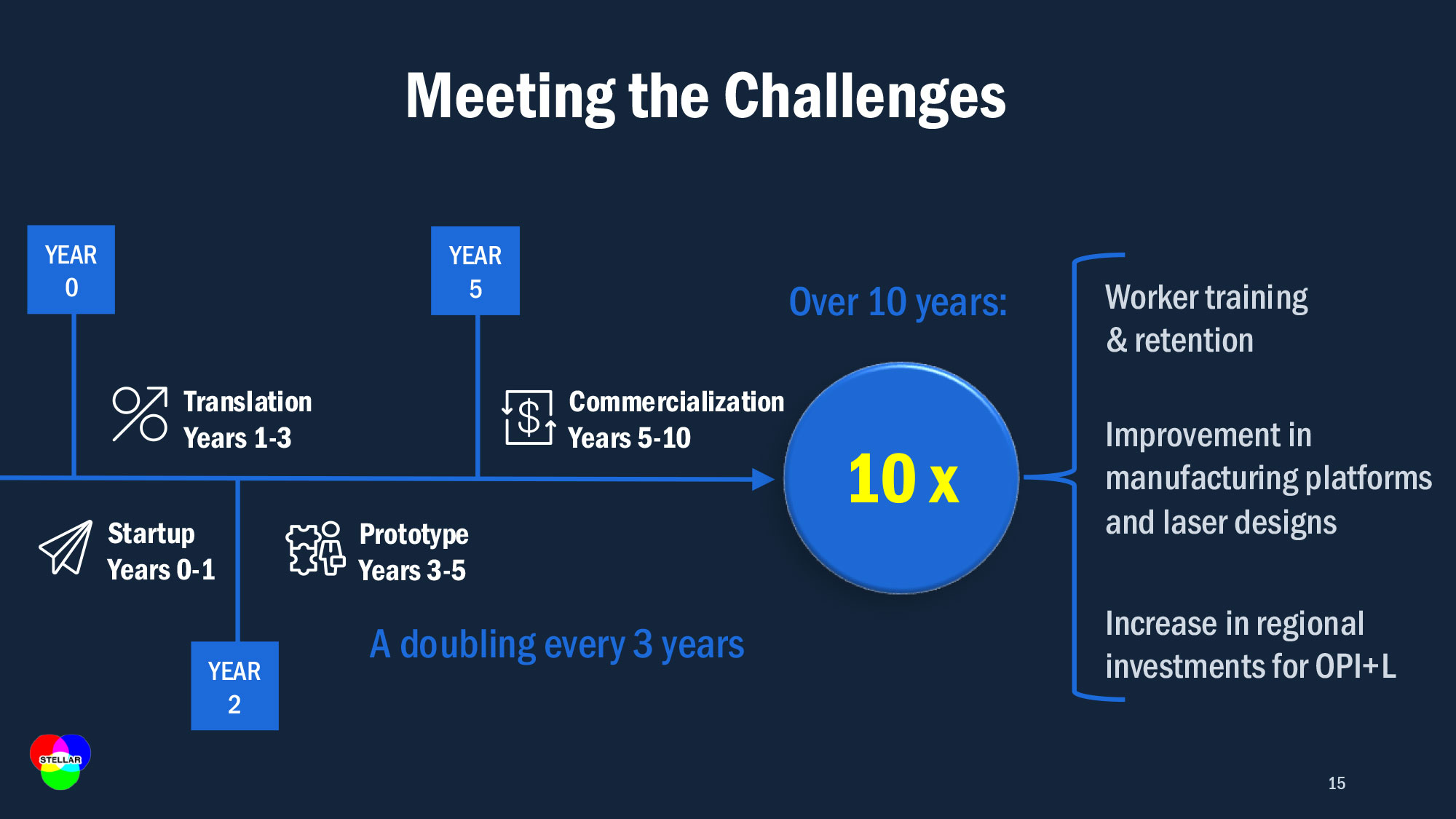Press Release
University-led STELLAR project named a finalist in national ‘innovation engines’ competition
“The STELLAR Engine leverages our region’s strengths in optics, photonics, imaging, and lasers and helps position it as a hub for laser innovation, talent, and technologies to enhance our national competitiveness and local economic vitality,” says University of Rochester President Sarah Mangelsdorf.
Science, Technology, and Engineering for Laser and Laser Applications Research (STELLAR)
STELLAR Mission
To create and grow an ecosystem in the Rochester, NY region that advances the science, technology, and engineering of lasers to provide US-based sources of next-generation lasers for scientific, industrial, manufacturing, energy, biomedical, and national security applications.

Background
The US faces an urgent call for strategic independence in critical technologies while revitalizing domestic manufacturing, thereby ensuring national independence for critical supply chains. To build the greatest economy in history, the US must lead the world both in emerging industries and rapidly evolving technologies. Few technologies demand more immediate action than light- and laser-based technologies where US leadership has eroded over the past 30 years. The Rochester/Finger Lakes (ROC/FLX) STELLAR regional innovation engine holds the potential to meet these challenges. STELLAR is strengthened by a partnership centered around innovations in laser technology featuring a six-year $16M commitment by New York State, over $1.5M worth of new resources committed by industry partners, and the potential partnership with the National Science Foundation (NSF).
To take the lead in this area industry needs to do the following:
- Increase education and training in lasers
- Invest to scale research and development (R&D) to manufacturing
- Restore the supply chain of critical components
Why laser and laser applications?
- The $16T marketplace depends on lasers
- Seven of ten NSF-TIP focus areas depend on lasers and laser applications
Why Rochester and the Finger Lakes Region?

Rochester: Where American Optics Began—and Still Leads
One hundred and seventy five years of precision, innovation, and light.

A hotbed for light-based tech foundational to critical industries
Expertise spans research and development, sensors, lasers, lenses, medical devices, optical coatings, optical components, metrology, semiconductor supply chain, and advanced manufacturing.

Why the ROC/FLX Region?
Density of talent and patent activity with specialized firms and workers second only to Silicon Valley.

Gaps and Challenges
Four Main Challenge Areas
- Talent shortage
- Translation of technology into business
- Core R&D investment
- Scale manufacturing capacity through capital and markets
To overcome these challenges we have devised a 10-year plan with a 10x goal: years 0-1 startup; years 1-3 translation; years 3-5 prototype; years 5-10 commercialization; over 10 years worker training and retention, improvement in manufacturing platforms and laser designs, and an increase in regional investments for OPI+L.
STELLAR Goals
With this plan, STELLAR will achieve:
Increase employee training and retention for the ROC/FLX laser ecosystem
Improvement in performance and cost for critical laser systems and components at scale for manufacturing capacity
Increase in regional investments for the translation of technologies into commercialization
STELLAR Leadership
Tom Brown, PI
Interim CEO, R&D Coordination
The Institute of Optics
Leah George VanScott, co-PI
Economic Development and Regional Coordination
Greater Rochester Enterprises
Stefan Preble, co-PI
Photonics R&D and Workforce Development
RIT Microsystems Engineering
- sfpeen@rit.edu
Sujatha Ramanujan
Managing Director
NextCorps Luminate
Jon Zuegel
Extreme Laser R&D
Laboratory for Laser Energetics (UR)
Alexis Vogt, co-PI
Education and Workforce Development
Monroe Community College Optical Systems Technology
- avogt4@monroecc.edu










